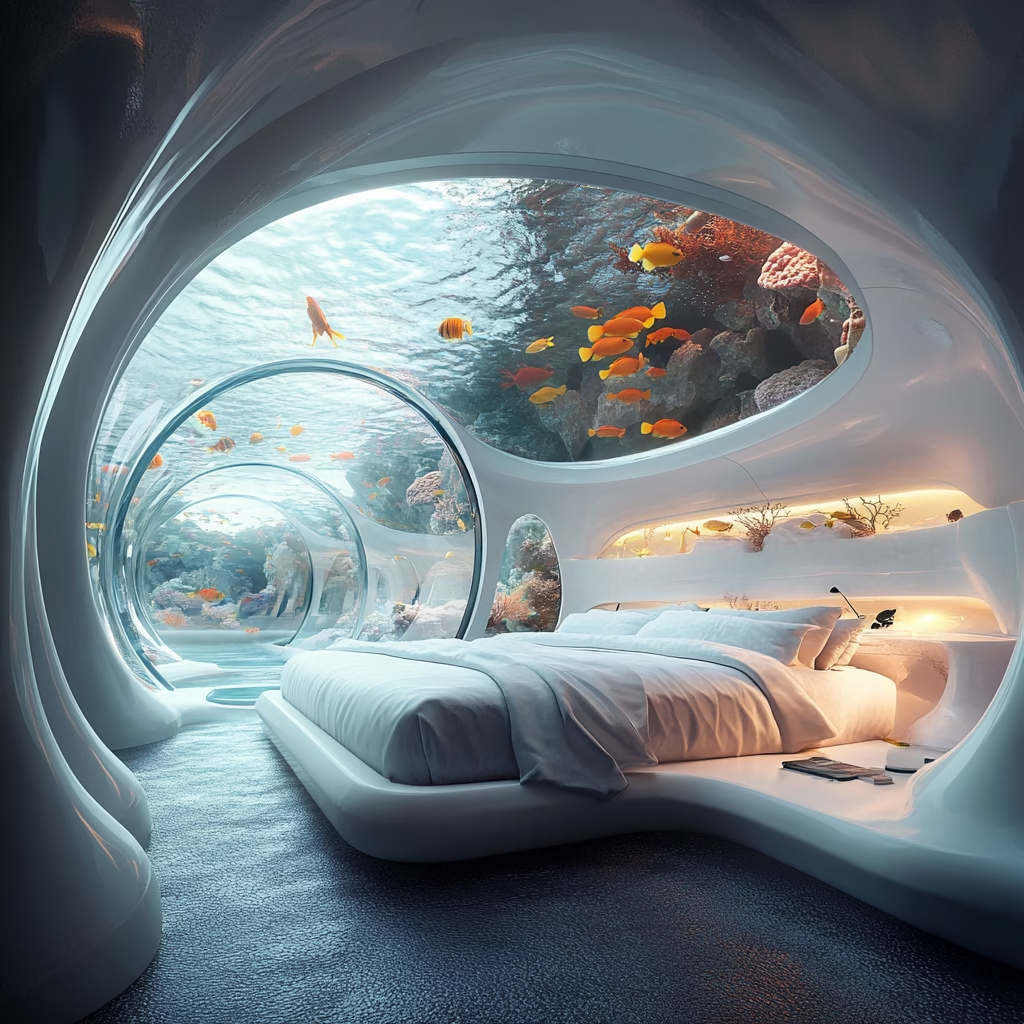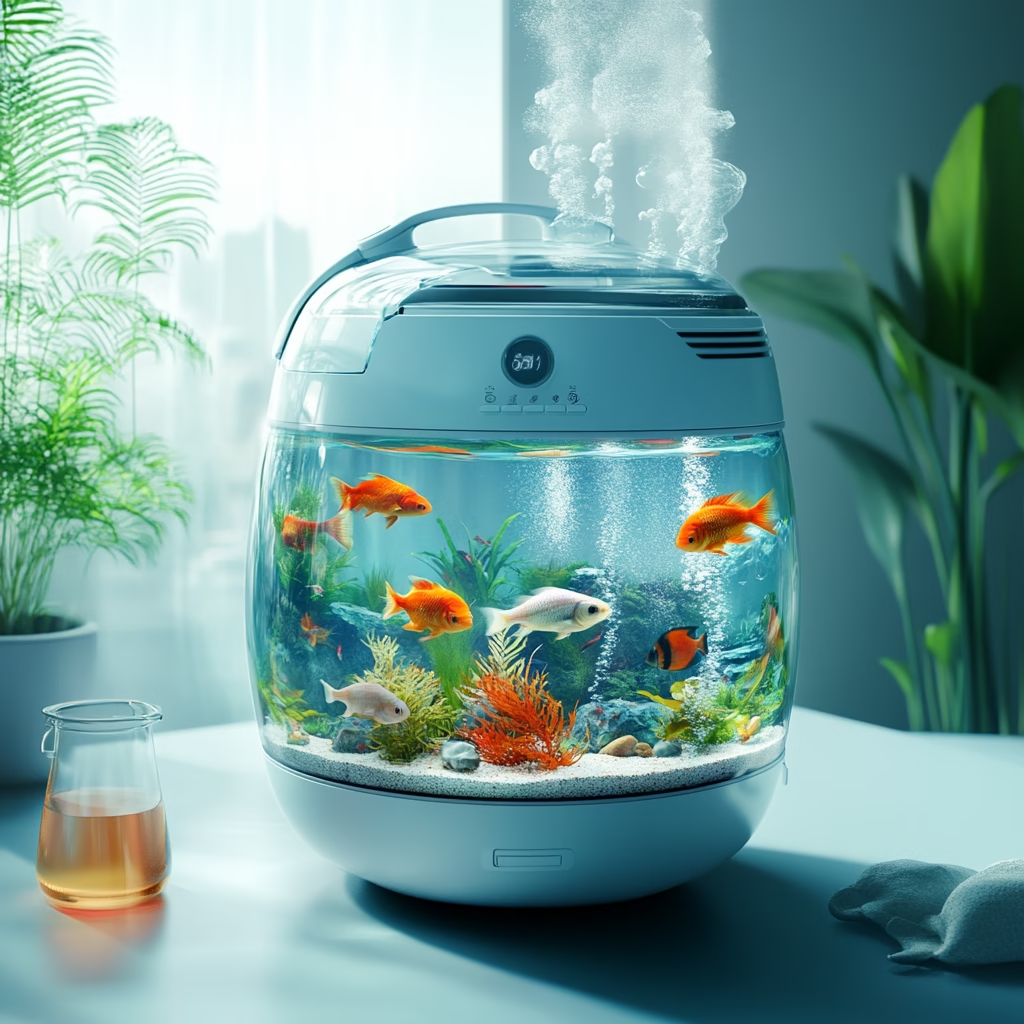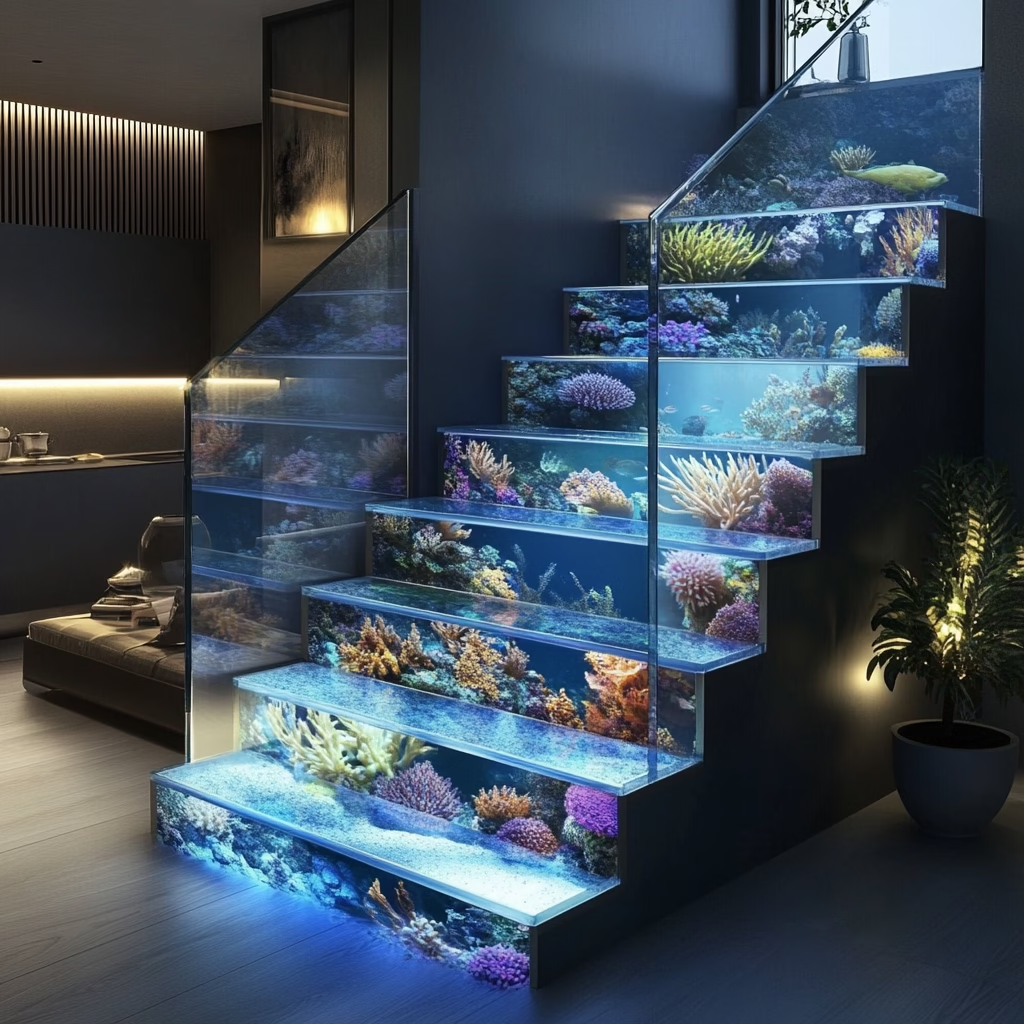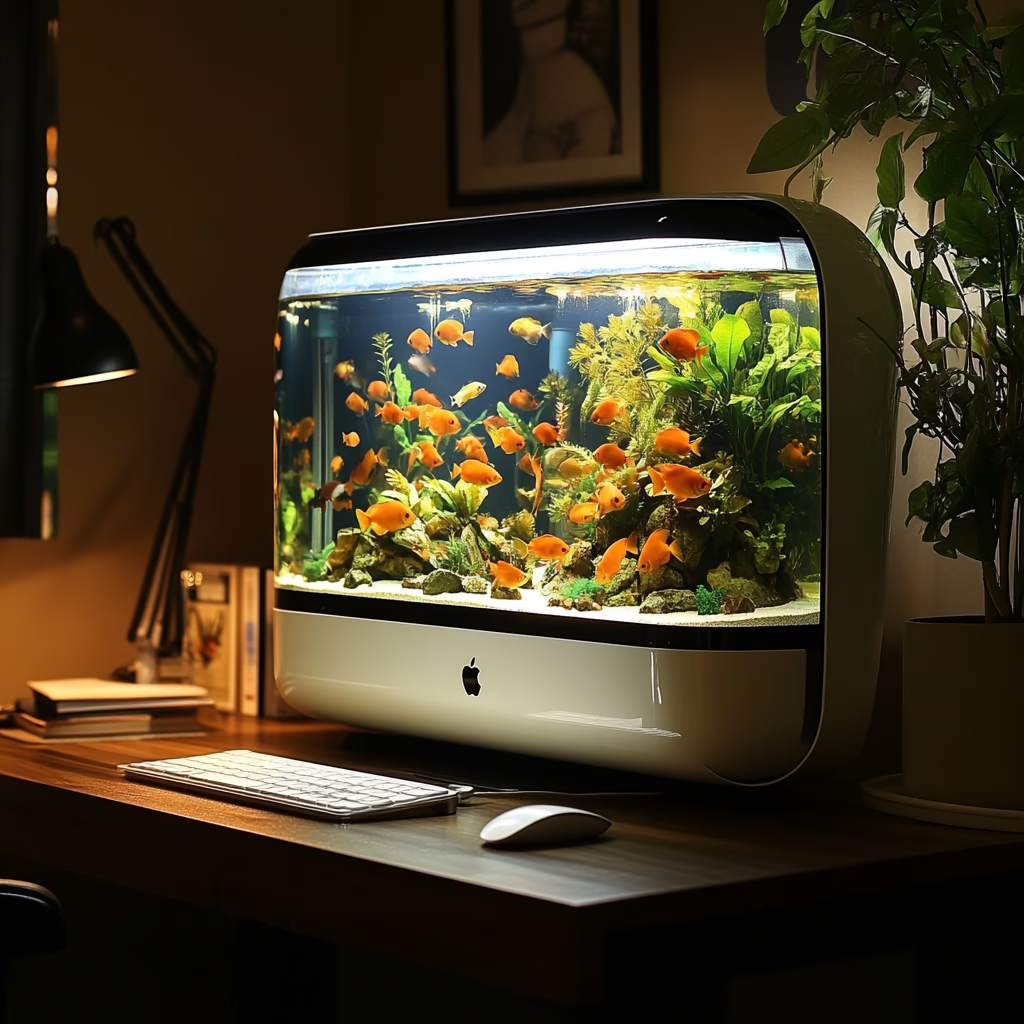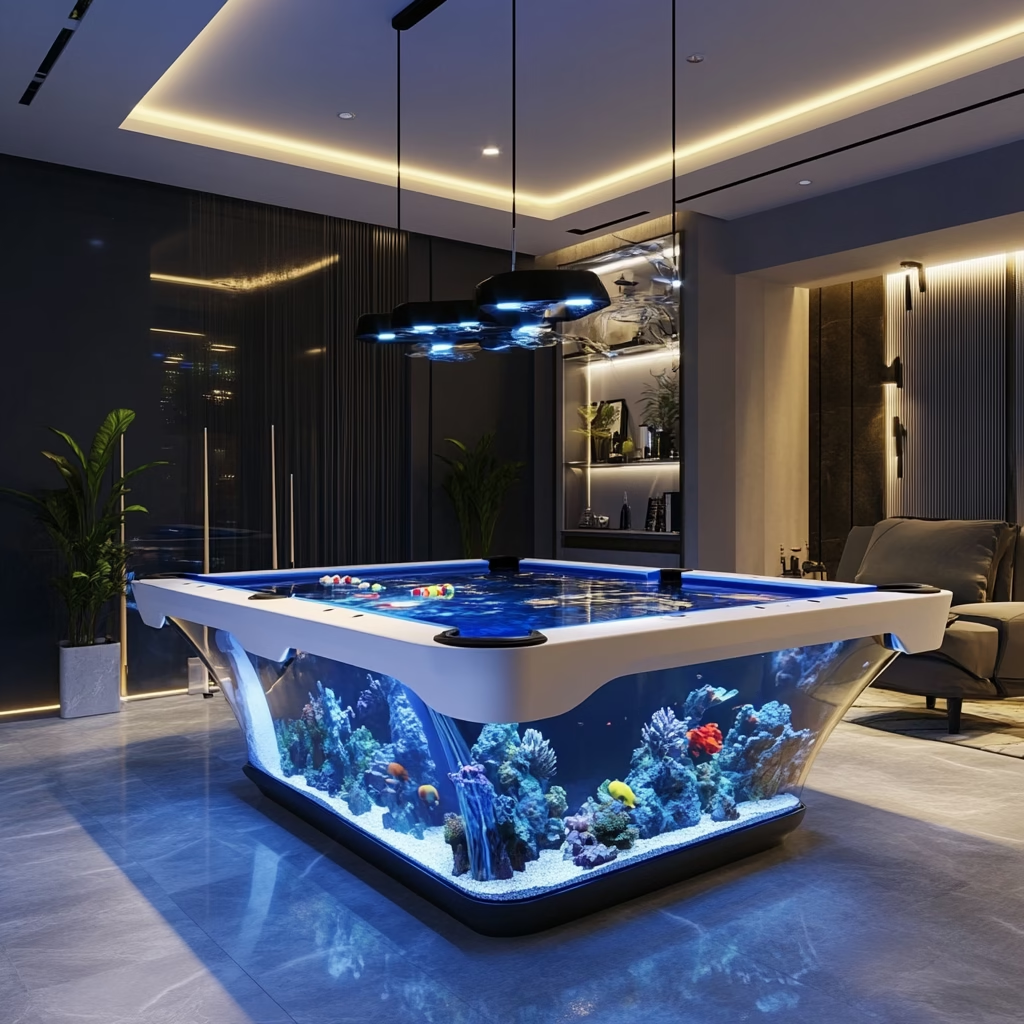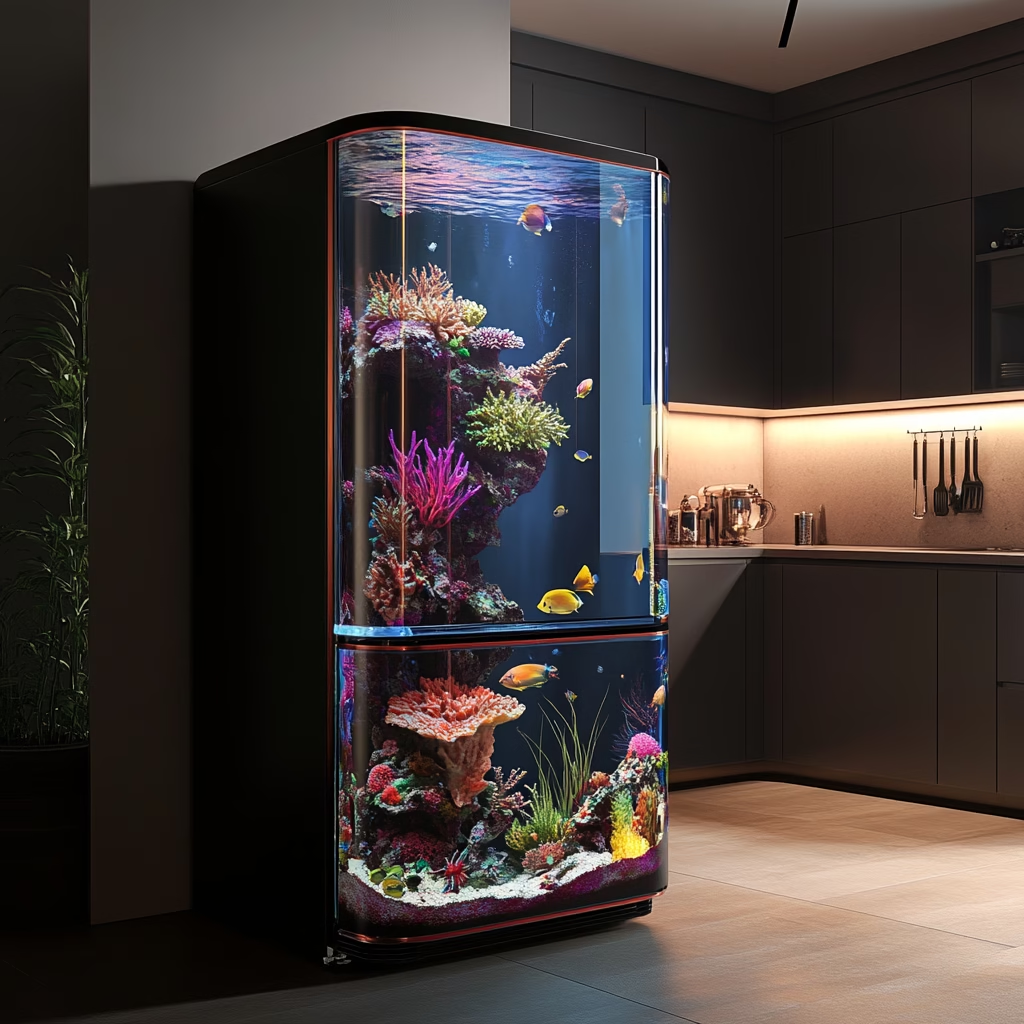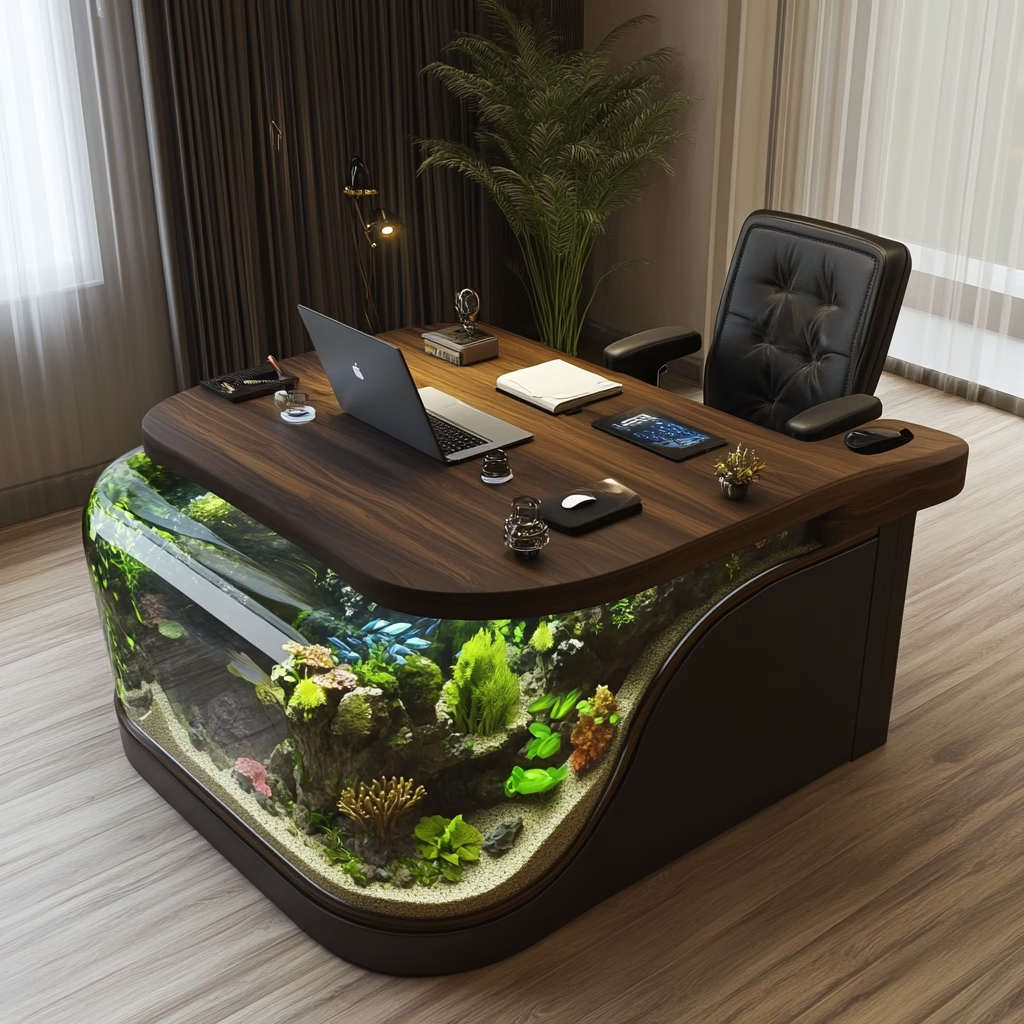Aquariums offer a glimpse into an underwater world, providing both aesthetic pleasure and a fascinating study of aquatic life. At the heart of a successful aquarium lies a crucial component—the aquarium bed. This article explores everything you need to know about aquarium beds, from their importance and benefits to various types and maintenance tips. Whether you’re a beginner setting up your first tank or an experienced aquarist looking to upgrade your setup, this comprehensive guide will help you create an aquarium bed that supports a thriving aquatic ecosystem.
What is an Aquarium Bed?
An aquarium bed refers to the substrate layer at the bottom of your aquarium. Much like the soil in a garden, this base layer plays several essential roles in your aquatic environment. It provides a surface for beneficial bacteria to colonize, supports the roots of aquatic plants, and contributes to the overall aesthetics of the tank.
When choosing an aquarium bed, you are not only considering the visual appeal but also the health and functionality of your aquarium. A well-chosen substrate can help maintain water quality, stabilize pH levels, and provide hiding places for bottom-dwelling fish and invertebrates. The term “aquarium bed” encapsulates both the physical substrate itself and the concept of creating a stable foundation for your aquatic ecosystem.
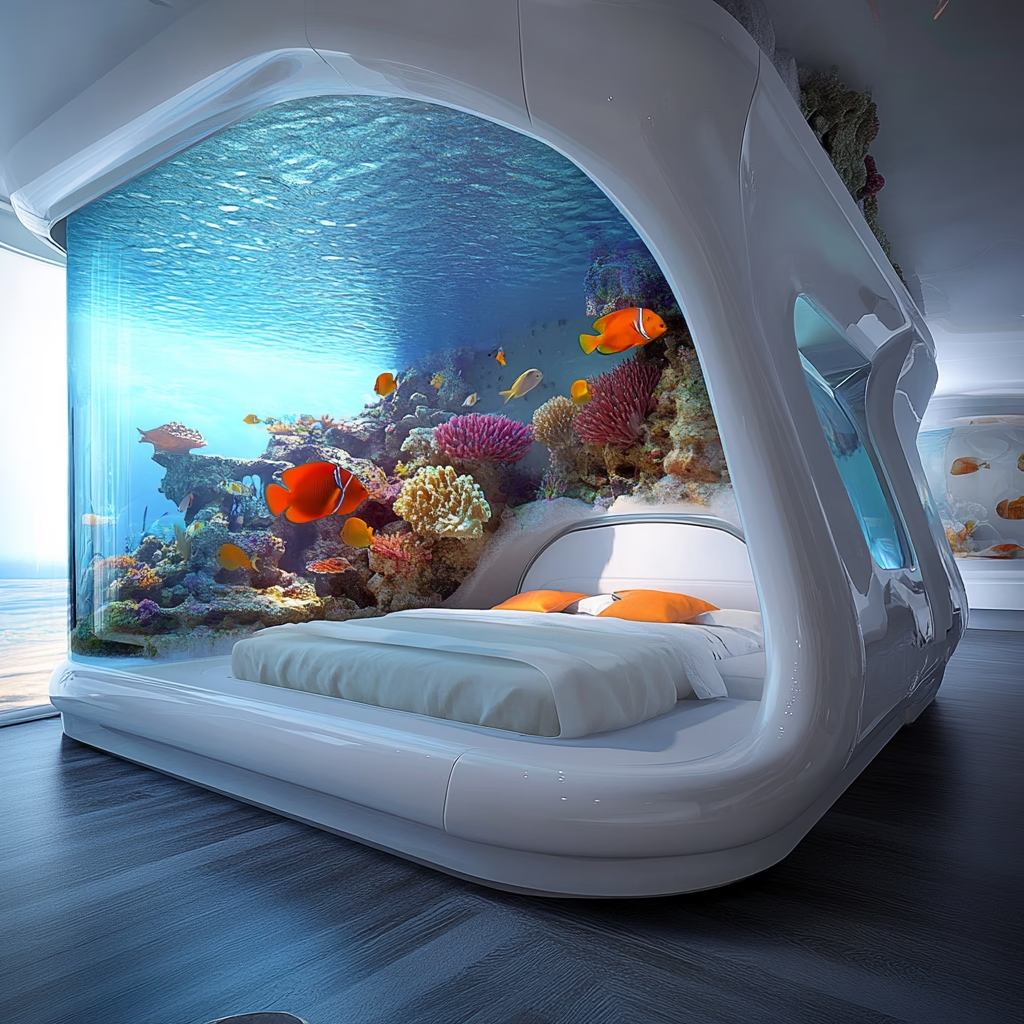
The Benefits of a Well-Designed Aquarium Bed
Designing an effective aquarium bed offers multiple advantages:
Biological Filtration
The aquarium bed provides an ideal surface for beneficial bacteria to grow. These bacteria are critical in breaking down harmful ammonia and nitrites produced by fish waste and decaying organic matter. A healthy bacterial colony helps maintain a stable nitrogen cycle, ensuring a safer environment for your aquatic inhabitants.
Plant Growth and Nutrient Supply
For aquarists interested in a planted tank, the aquarium bed is crucial. It acts as a reservoir of nutrients, especially if you use substrates that are rich in essential minerals. Specialized substrates, such as nutrient-rich aquatic soils, can support robust plant growth by providing necessary elements like iron, magnesium, and potassium.
Natural Aesthetics
A visually appealing aquarium is one of the main draws for many hobbyists. The right aquarium bed enhances the overall look of the tank, mimicking natural aquatic landscapes. Whether you prefer a sandy seabed or a more rugged gravel look, the substrate forms the canvas upon which you build your aquascape.
Habitat for Aquatic Life
Many species of fish, shrimp, and bottom-dwelling creatures rely on the aquarium bed for shelter and foraging. A well-designed substrate offers hiding places and breeding grounds, encouraging natural behaviors. It also helps to reduce stress among tank inhabitants by providing a more natural environment.
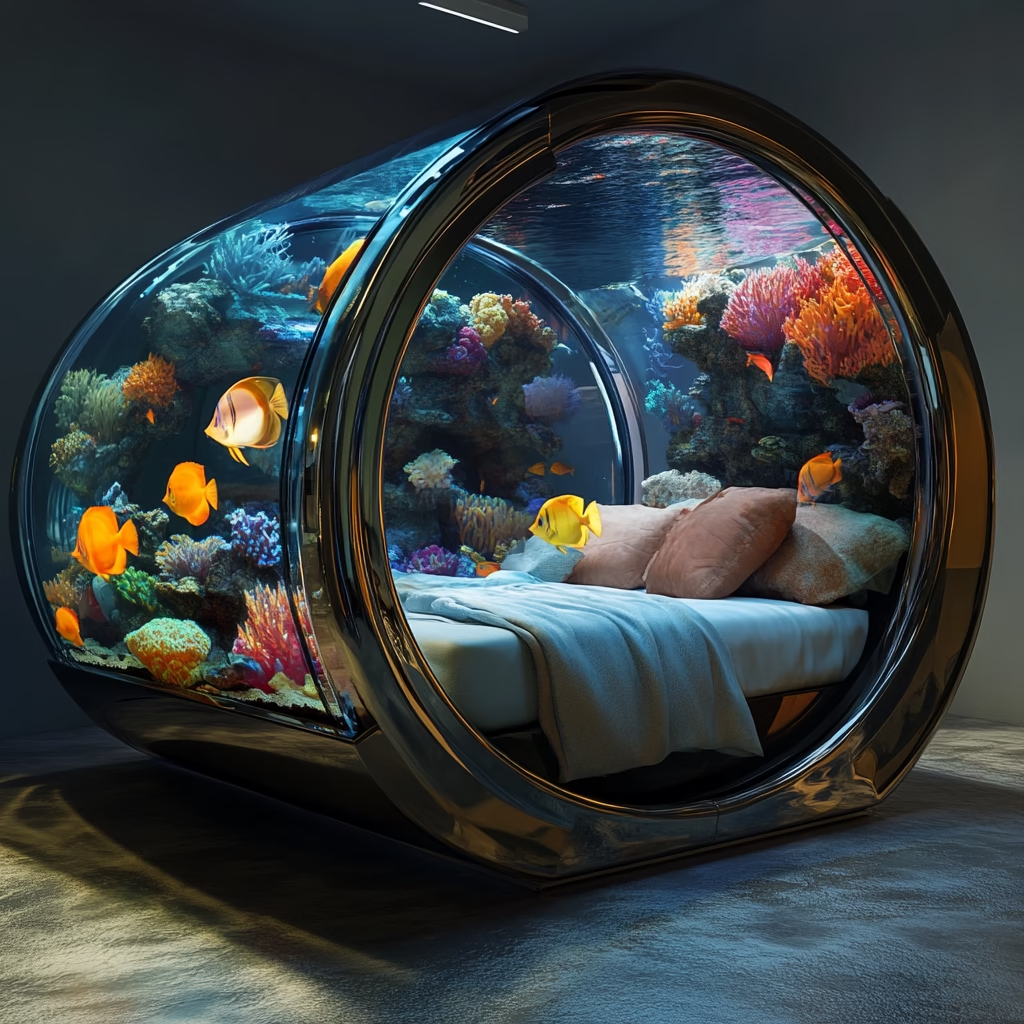
Types of Aquarium Beds
Choosing the right aquarium bed depends on your specific needs, the type of aquarium you’re setting up, and the species you plan to keep. Below are some common types of substrates:
Gravel
Gravel is one of the most popular choices for aquarium beds due to its versatility and ease of use. It comes in various sizes and colors, making it easy to match your desired aquascape design.
- Pros:
- Easy to clean and replace.
- Good for tanks with fish that prefer digging or burrowing.
- Available in different hues and textures.
- Cons:
- May trap debris and waste if not cleaned regularly.
- Can sometimes shift, disturbing plant roots.
Sand
Sand offers a smooth, natural look that is ideal for tanks mimicking riverbeds or ocean floors. It is particularly popular in aquariums housing bottom-dwelling fish or invertebrates.
- Pros:
- Provides a soft surface for delicate species.
- Mimics natural environments for many fish.
- Often preferred in aquascapes where a seamless look is desired.
- Cons:
- Compacted sand can lead to anaerobic zones, where harmful gases build up.
- Can be more challenging to vacuum and clean due to its fine texture.
Nutrient-Rich Aquatic Soils
For aquarists focused on planted tanks, nutrient-rich substrates offer an excellent solution. These substrates are designed to provide essential nutrients that promote vigorous plant growth.
- Pros:
- Supports lush, healthy plant growth.
- Enhances water chemistry by slowly releasing nutrients.
- Often combined with a top layer of decorative gravel or sand for aesthetics.
- Cons:
- Can sometimes lower pH levels, requiring careful monitoring.
- May require periodic replacement or topping up as nutrients are depleted.
Specialty Substrates
There are also specialty substrates designed for specific purposes, such as substrates that help buffer pH or those tailored for certain species like marine organisms. These substrates often come with detailed usage instructions to ensure compatibility with your aquarium’s needs.
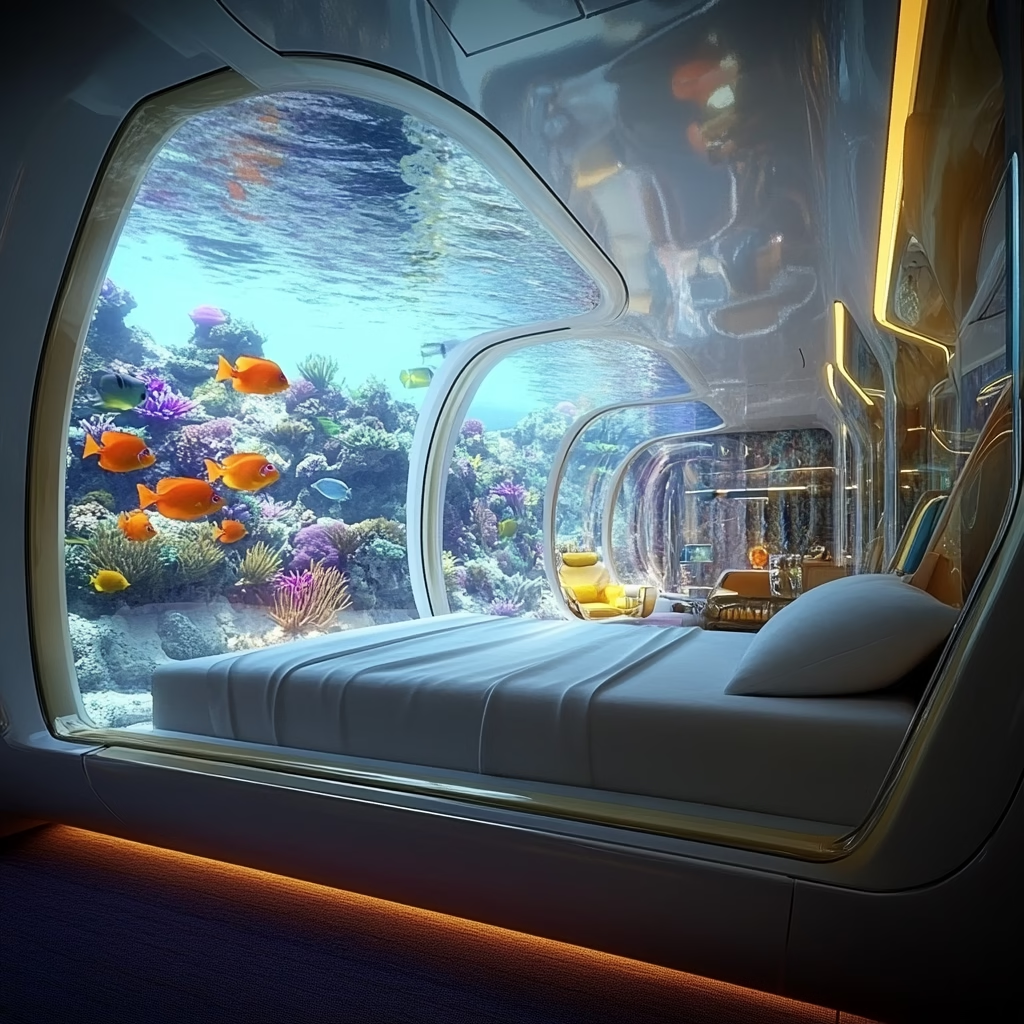
How to Set Up an Aquarium Bed: A Step-by-Step Guide
Creating the perfect aquarium bed requires careful planning and preparation. Follow these steps to set up your substrate effectively:
Step 1: Cleaning the Substrate
Before placing any substrate in your tank, it’s essential to rinse it thoroughly. This removes dust, debris, and potential contaminants that could cloud the water or harm fish.
- Tip: Place the substrate in a large container and rinse with water until the runoff appears clear.
Step 2: Layering the Substrate
Consider the natural stratification found in aquatic environments. For planted tanks, you might create a layered substrate system:
- Base Layer: Use nutrient-rich aquatic soil as a foundation for plants.
- Top Layer: Add a decorative layer of gravel or sand for aesthetics and to protect the nutrient base.
Step 3: Leveling the Bed
After placing the substrate, use a tool or your hand to level the surface. This ensures that the aquarium bed is even, providing a stable environment for plant roots and reducing the risk of low spots where debris can accumulate.
Step 4: Planting and Decorating
Once your substrate is in place, it’s time to add aquatic plants and decorations. Arrange your plants in a way that mimics natural underwater landscapes, leaving enough space for fish to swim and for maintenance equipment to operate.
- Tip: Plant taller species at the back and shorter ones at the front to create depth and visual interest.
Step 5: Filling the Tank
Slowly add water to the tank to avoid disturbing the substrate. Pouring water over a plate or a bag of plastic can help disperse the water flow and minimize disruption.
Step 6: Cycling the Aquarium
After setting up your aquarium bed and filling the tank, it’s crucial to cycle the aquarium. This process establishes a stable population of beneficial bacteria that will break down waste products. Cycling can take several weeks, so patience is key.
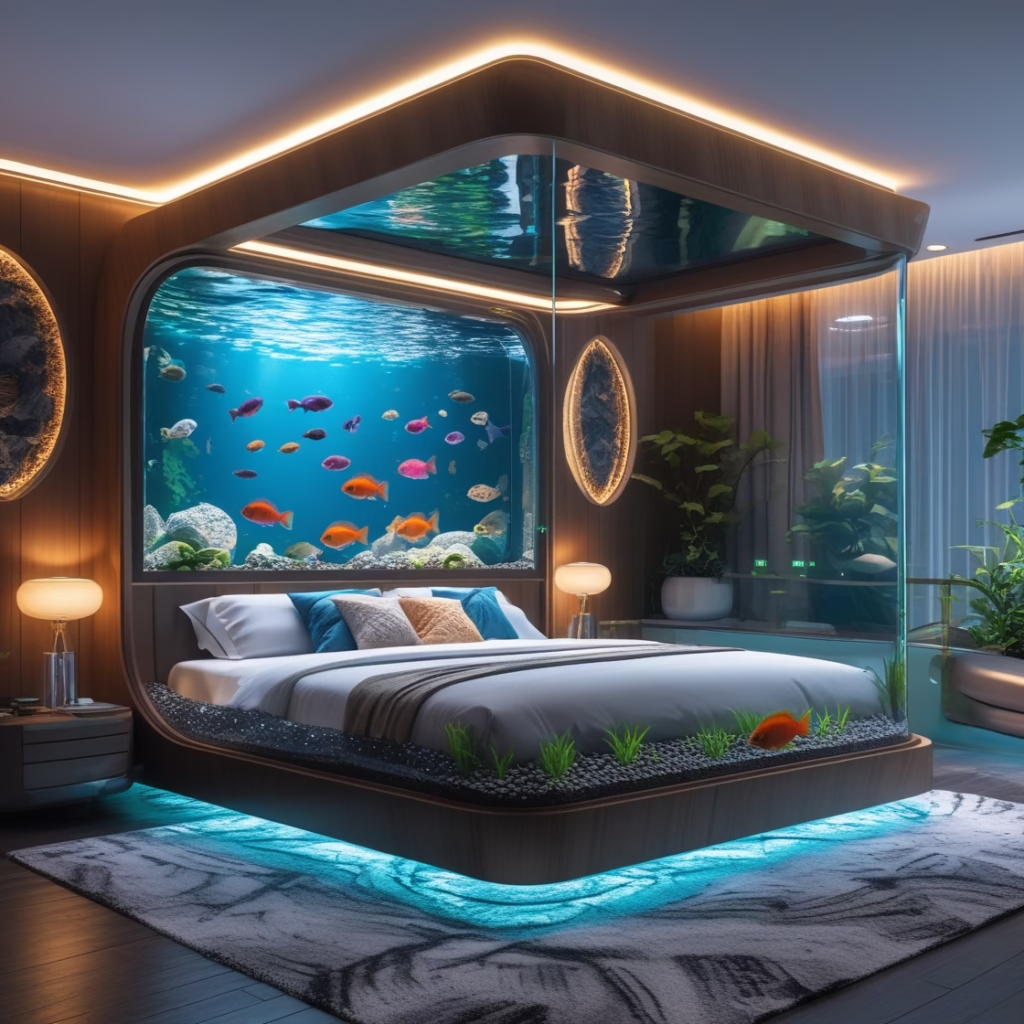
Aquascaping: Designing Your Aquarium Bed
Aquascaping is the art of arranging aquatic plants, rocks, and other decorative elements within an aquarium. A well-designed aquarium bed is the foundation of successful aquascaping. Here are some design tips:
Theme and Style
Decide on a theme before starting your design. Whether you want a natural riverbed, a lush planted tank, or a modern minimalist look, your theme will guide your choice of substrate and decorations.
Focal Points and Layout
Choose a focal point in your aquarium design. This might be a particularly striking plant, a unique rock formation, or an ornamental piece. Arrange other elements around this focal point to create balance and harmony.
Color Coordination
Select substrate colors that complement the overall color palette of your aquarium. Lighter substrates can make your tank appear larger, while darker substrates may enhance the vibrancy of your plants and fish.
Functional Beauty
Remember that while aesthetics are important, functionality should never be compromised. Ensure that the substrate supports the health of both plants and fish, and that it allows for easy cleaning and maintenance.
Incorporating Hardscape Elements
Consider integrating natural hardscape elements such as driftwood, rocks, and caves into your design. These elements not only add visual interest but also provide additional surfaces for beneficial bacteria to colonize.
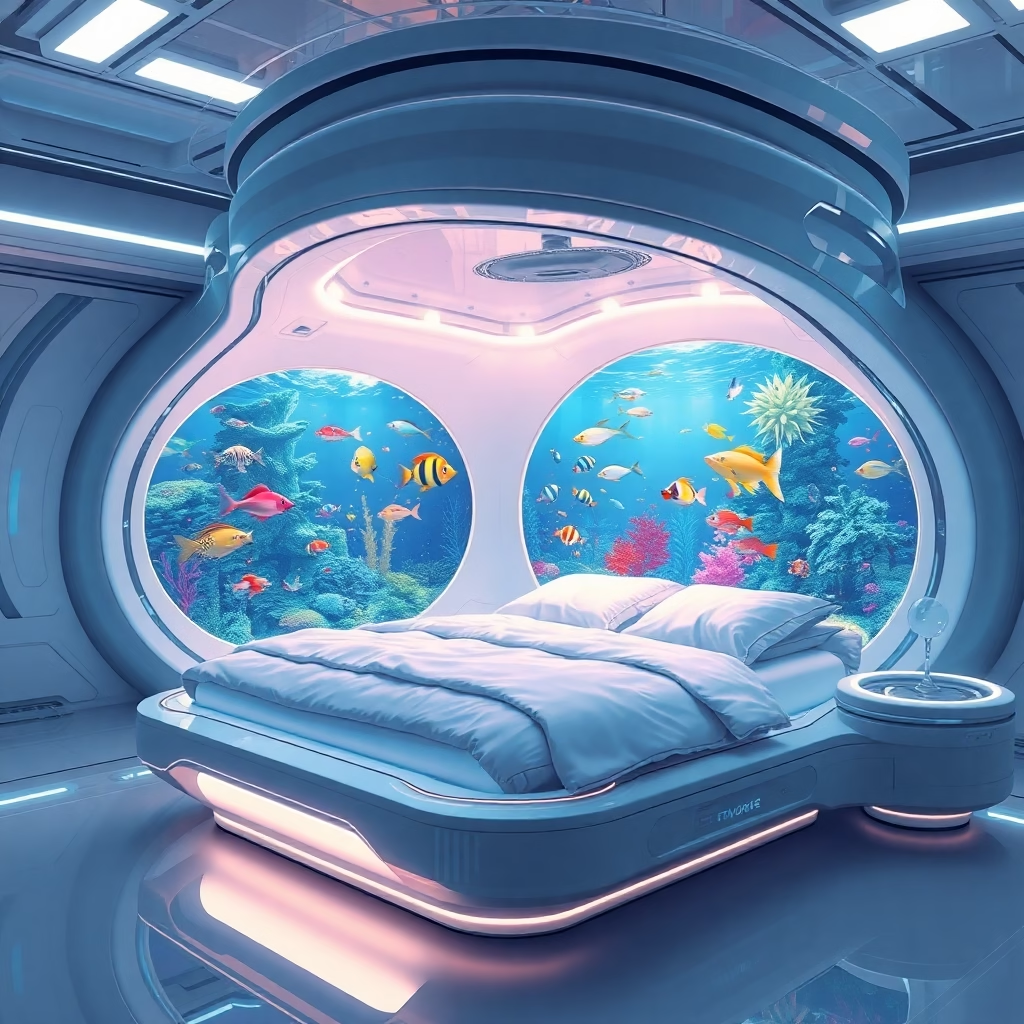
Maintenance and Care for Your Aquarium Bed
A beautiful aquarium bed requires regular maintenance to keep your aquatic ecosystem healthy. Here are some essential care tips:
Regular Vacuuming
Debris and uneaten food can accumulate on the aquarium bed, leading to poor water quality. Use a gravel vacuum during routine water changes to remove debris from the substrate.
- Tip: Aim to vacuum about 10-20% of the substrate during each cleaning session to maintain a healthy balance without disturbing beneficial bacteria.
Monitoring Water Parameters
The type of substrate you choose can affect the water’s pH and hardness. Regularly test your water to ensure it remains within the optimal range for your aquatic species.
Plant Care
If your aquarium bed supports live plants, ensure they are receiving enough light and nutrients. Occasionally trim overgrown plants and remove any dead or decaying leaves to prevent the buildup of organic matter.
Avoiding Overfeeding
Overfeeding can lead to excess waste and a buildup of harmful substances in the substrate. Feed your fish small amounts, and remove any uneaten food promptly.
Replacing or Refreshing the Substrate
Over time, nutrient levels in your substrate can deplete, particularly in heavily planted tanks. Depending on the substrate type, you may need to refresh or partially replace it periodically. Some aquarists choose to re-layer their aquarium bed during major cleanings or when replanting.
Common Problems and Solutions for Aquarium Beds
Even with careful planning, aquarium beds can sometimes develop issues. Here are a few common problems and how to address them:
Algae Growth
Excessive algae on the substrate can be unsightly and may indicate an imbalance in the tank’s ecosystem.
- Solution: Ensure your aquarium receives the right amount of light and nutrients. Consider introducing algae-eating fish or invertebrates, and perform regular water changes to maintain water quality.
Anaerobic Zones
If your substrate becomes too compacted, especially in sandy setups, anaerobic zones can develop where harmful gases accumulate.
- Solution: Gently stir the substrate periodically to promote oxygenation, or consider using a mix of substrate sizes to improve water flow through the bed.
Uneven Substrate Layering
An uneven aquarium bed can trap debris and make maintenance more difficult.
- Solution: During setup, ensure that the substrate is evenly spread. If problems arise later, use a gentle tool to re-level the surface during cleaning.
Nutrient Depletion
In planted tanks, the nutrients in the substrate can eventually become depleted, affecting plant health.
- Solution: Supplement your tank with root tabs or liquid fertilizers designed for aquatic plants. Periodically testing the nutrient levels can help you know when to intervene.
Enhancing the Ecosystem: The Role of Beneficial Bacteria
The aquarium bed is not just a static decorative feature; it is a living part of your aquarium ecosystem. Beneficial bacteria colonize the substrate and play a vital role in breaking down organic waste and toxins.
How Beneficial Bacteria Work:
- Nitrogen Cycle: Beneficial bacteria convert harmful ammonia and nitrites into less harmful nitrates through the nitrogen cycle.
- Biofilm Formation: These bacteria form biofilms on the surfaces of the substrate, creating a protective layer that stabilizes the ecosystem.
- Sustainable Balance: A balanced population of beneficial bacteria helps maintain water quality, which is essential for the overall health of the aquarium inhabitants.
Ensuring that your aquarium bed supports a thriving bacterial community is key to long-term tank health. Cycling your aquarium properly and avoiding harsh cleaning methods that remove beneficial bacteria are crucial steps.
Innovations and Trends in Aquarium Beds
The aquarium hobby continues to evolve, and so do the materials and techniques used in creating aquarium beds. Here are some current trends and innovations:
Eco-Friendly Substrates
Many aquarists are now opting for sustainable substrates that minimize environmental impact. These eco-friendly options often use recycled materials or natural compounds that mimic native aquatic environments without depleting resources.
Integrated Fertilizer Systems
Modern substrates sometimes come pre-mixed with fertilizers that slowly release nutrients over time. These integrated systems reduce the need for frequent dosing and help maintain a steady nutrient balance for plant growth.
Hybrid Substrates
Some products combine the benefits of different substrate types. For example, a hybrid substrate might include a base layer of nutrient-rich soil topped with a layer of decorative gravel, offering both plant nourishment and aesthetic appeal.
Advanced Aquascaping Techniques
Aquascapers are now incorporating cutting-edge techniques, such as layering different textures and colors, to create visually dynamic aquarium beds. These designs not only serve a functional purpose but also transform aquariums into living pieces of art.
Tips for Selecting the Best Aquarium Bed for Your Tank
Selecting the right aquarium bed is a decision that depends on several factors. Consider the following tips:
Tank Type and Size
The size and type of your aquarium will influence the best substrate choice. Smaller tanks may benefit from finer substrates, while larger tanks can accommodate coarser materials that provide better support for larger plants and fish.
Inhabitants of the Aquarium
Consider the needs of your fish, invertebrates, and plants. Bottom-dwelling species might prefer sand or fine gravel, while a planted tank may require a nutrient-rich substrate to support plant growth.
Maintenance Considerations
Evaluate how much time and effort you are willing to invest in substrate maintenance. Some substrates require regular vacuuming and stirring, while others may offer easier cleaning options.
Aesthetic Preferences
Your personal taste in aquascaping and the overall theme of your tank are important. The right aquarium bed should complement your design vision, whether that is a minimalist, natural, or vibrant look.
Budget
While some substrates are more expensive due to their nutrient content or specialized features, there are affordable options available that still provide excellent support for your aquatic ecosystem.
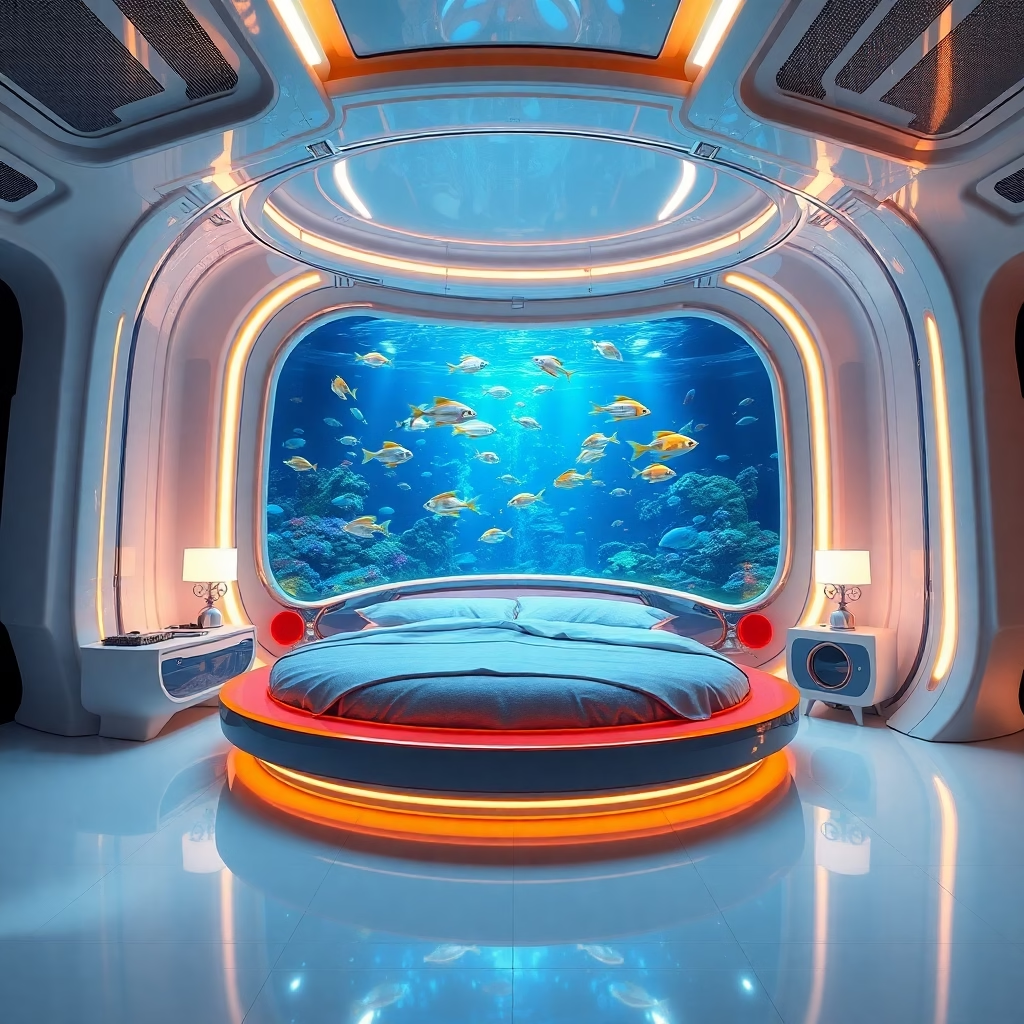
Conclusion
Designing and maintaining an effective aquarium bed is both an art and a science. It requires thoughtful consideration of the needs of your aquatic life, the natural processes that sustain the ecosystem, and the aesthetic goals of your aquascape. By understanding the various types of substrates available—from gravel and sand to nutrient-rich aquatic soils—and following proper setup and maintenance techniques, you can create a stable and visually stunning environment that supports a thriving underwater world.
An aquarium bed is more than just the bottom of your tank; it is the foundation upon which a balanced aquatic ecosystem is built. Whether you are aiming for a lush planted tank or a dynamic, natural riverbed, the choices you make in designing your aquarium bed will have a profound impact on the health and longevity of your aquarium.
By following the steps outlined in this guide and keeping up with the latest trends and innovations, you can ensure that your aquarium bed provides the perfect environment for both your aquatic plants and animals. Experiment, be creative, and enjoy the journey as you transform your aquarium into a vibrant, living masterpiece.
Remember, the key to success lies in maintaining balance—between aesthetics and functionality, between natural beauty and the scientific principles of aquatic life. With the right approach, your aquarium bed will not only be a visual centerpiece but also a dynamic ecosystem that nurtures life beneath the surface.
Creating a thriving aquarium begins with the foundation you build, and there is no better foundation than a well-crafted aquarium bed. Embrace the process, learn from each step, and share your experiences with the vibrant community of aquarists who are equally passionate about bringing underwater landscapes to life.

